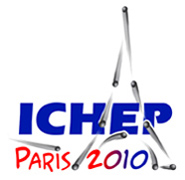Speaker
Dr
Mark Hartz
(University of Toronto/York University)
Description
The neutrinos studied in the T2K long baseline neutrino experiment are generated by the decay of hadrons produced when a 30 GeV proton beam is incident on a graphite target. Shifts in the proton beam position and direction at the target will cause changes in the neutrino energy spectra seen by the T2K off-axis neutrino detectors, while a small shift in the beam position or width when operating at high beam power can cause damage to the target, hence the need for accurate measurements of the proton beam profile near the target. The Optical Transition Radiation (OTR) monitor measures the profile of the proton beam perpendicular to the beam direction by imaging transition radiation produced by the beam as it traverses a metallic foil located 30 cm upstream of the target. The OTR monitor provides fine grained 2D images of the beam, giving better than 1 mm accuracy for beam position and width measurements, while placing only optical and mechanical components in the high radiation environment near the T2K target. This talk will include an introduction to the theory of transition radiation, a discussion of the OTR monitor design and implementation, and results from the first year of operation.
Primary author
Dr
Mark Hartz
(University of Toronto/York University)
Co-authors
Dr
Akira Konaka
(TRIUMF)
Prof.
Alysia Marino
(University of Colorado)
Prof.
John Martin
(University of Toronto)
Mr
Patrick de Perio
(University of Toronto)
Prof.
Sampa Bhadra
(York University)
Mr
Vyacheslav Galymov
(York University)




